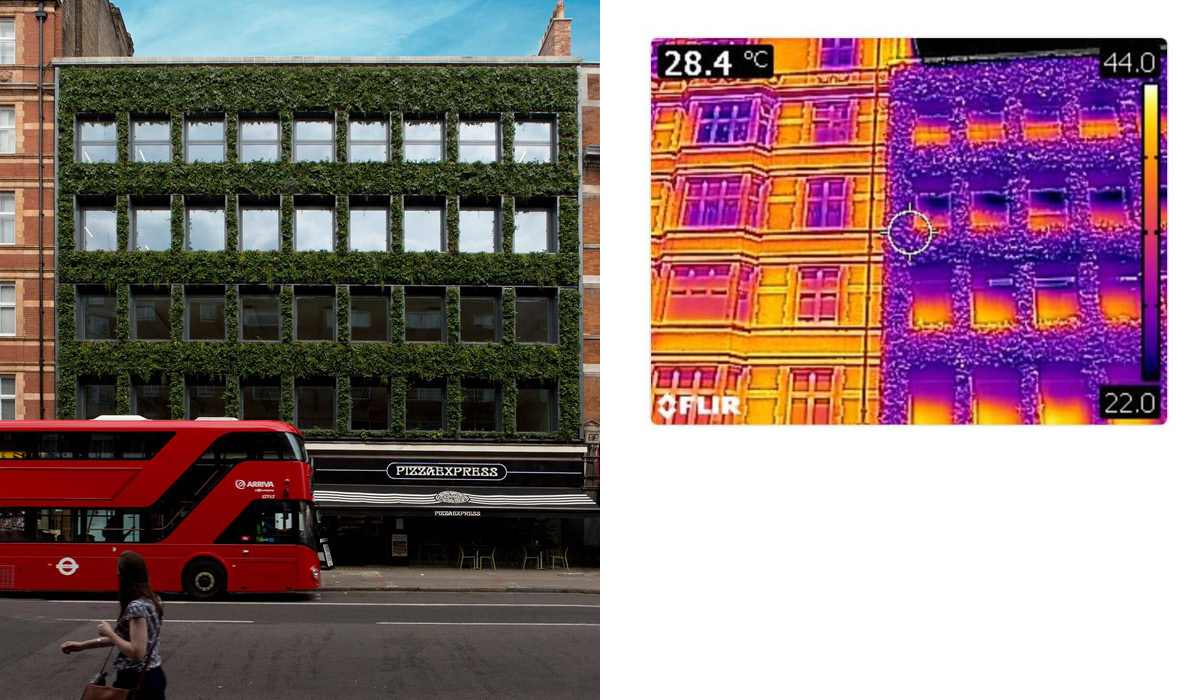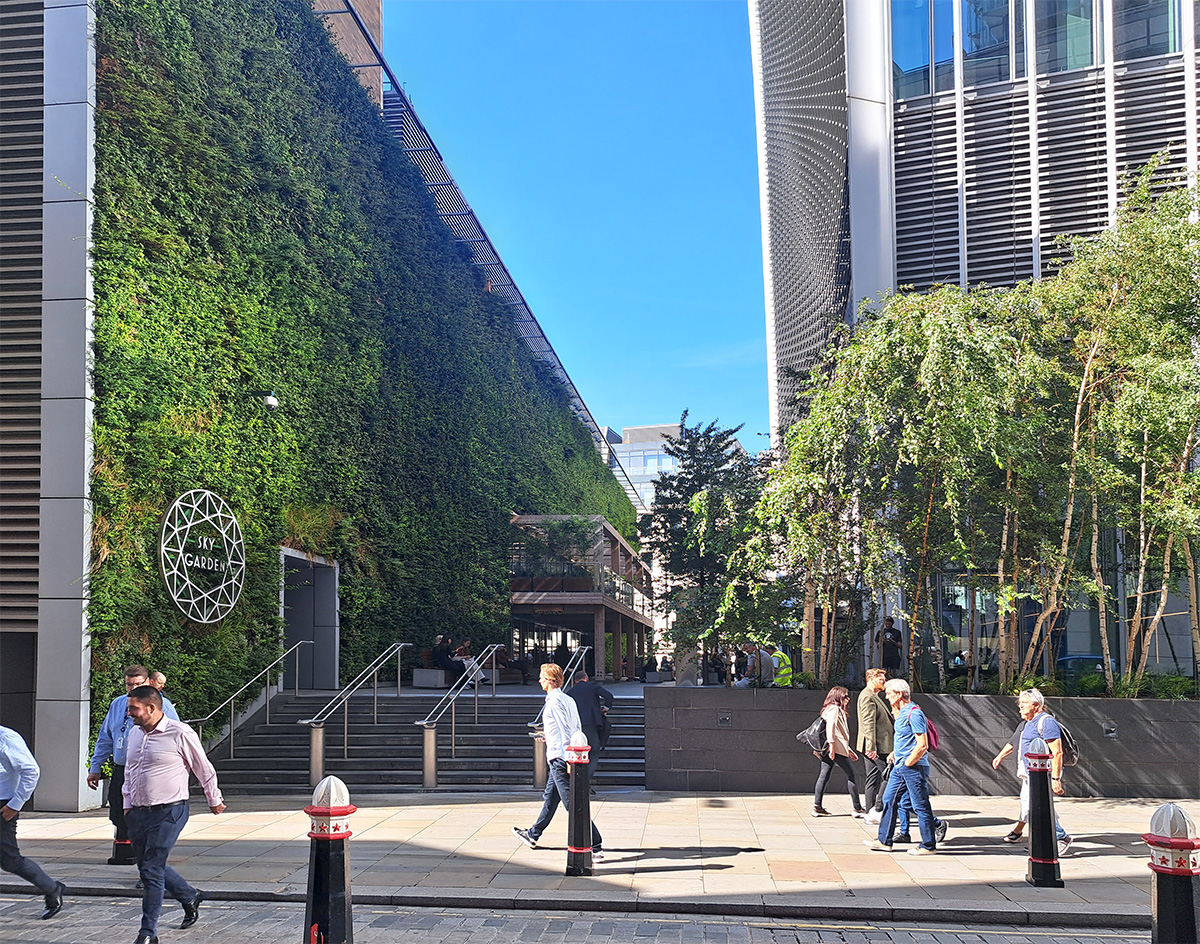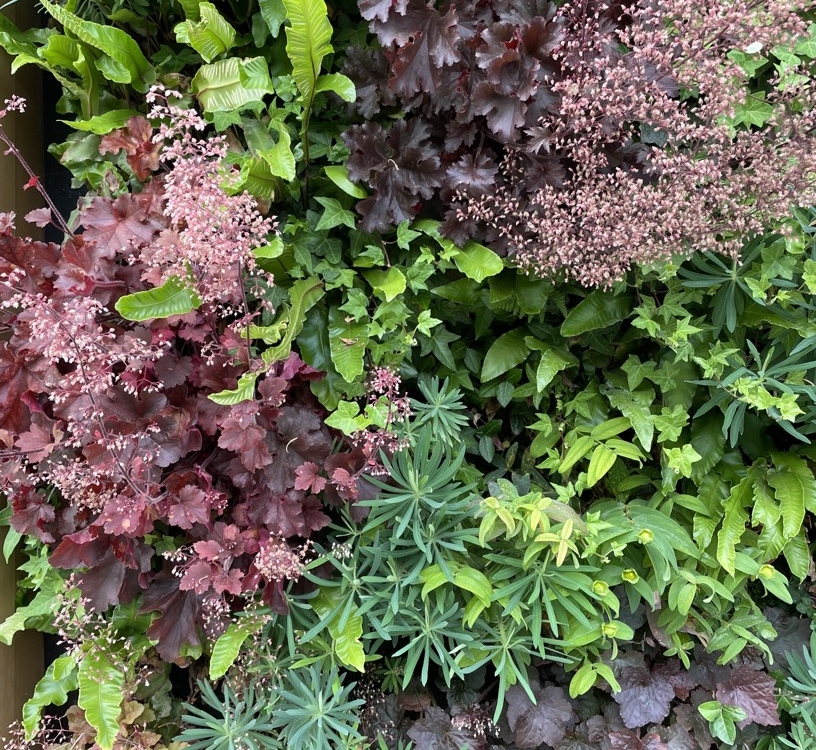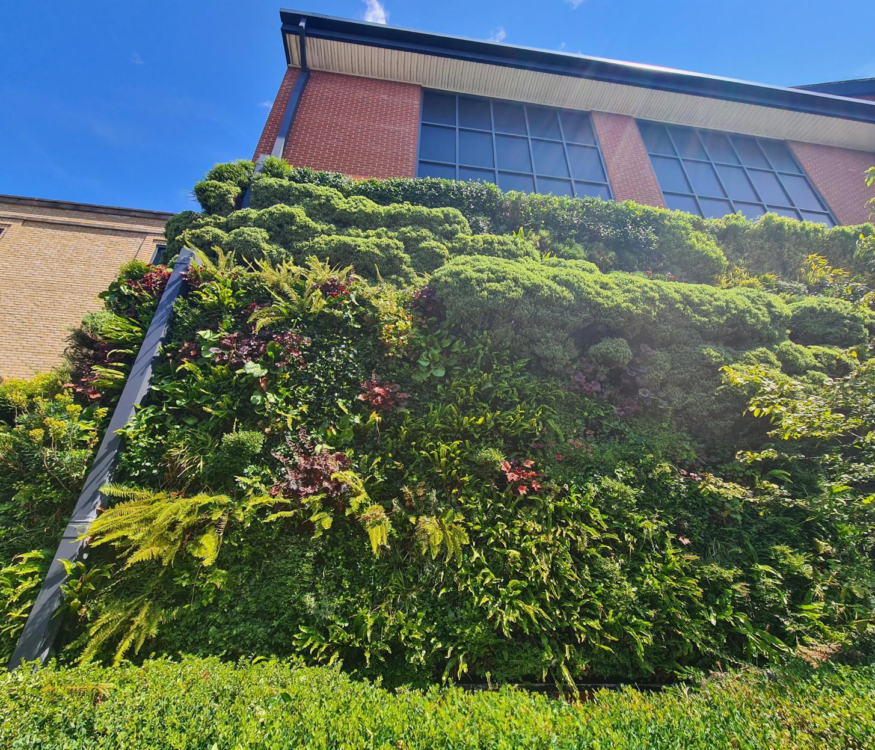Global temperatures continue to soar, and people living in cities and urban areas are particularly badly affected when temperatures rise. This is because buildings, roads, and pavements absorb heat during the day, which is then released at night. Cities also produce more pollution, which can trap heat within the city, exacerbating the impact of heatwaves.
Research shows that the City of London can be over five degrees warmer than suburban Greater London.
Finding sustainable solutions to keep cities cool is more critical than ever, and bringing more nature into our cities is a great way to achieve this. Trees, flowerbeds, and green open spaces are vitally important for creating livable cities, but when space is at a premium both literally and financially, living walls (aka green walls) offer a great solution. They can help in the following ways:
Relief from ‘urban heat islands’
Plants absorb sunlight, reducing the heat that buildings absorb during the day and therefore reflect back at night. On a city-wide scale, the introduction of vegetation can dramatically reduce the extremes of the urban heat island effect. A simple way to demonstrate this is with an infrared camera, as discovered by the Ecology Consultant Gary Grant when he visited one of our living walls on Southampton Row, Holborn, London.

Living wall at Synergy House, Southampton Row, thermal imagery showing the living wall is cooler than the neibouring facade.
Natural insulation
Researchers at the University of Venice and the University of Siena found that screening from direct solar radiation by green walls is among the most important factors affecting the thermal performance of building envelopes. Foliage provides solar shading, helping to keep buildings cool and reducing the need for mechanical cooling in summer. The researchers found that in Mediterranean climates, green walls can be up to 20 degrees cooler than bare walls and can reduce energy demand for cooling by up to 66%.
Evapotranspiration
Plants release moisture into the air through a process known as transpiration, where water evaporates from their leaves. This moisture absorption cools the air, reducing the surrounding temperature and creating a more comfortable microclimate. During a heatwave, this natural cooling effect can provide much-needed relief from extreme temperatures.

This living wall at Centrica’s offices in Windsor, helps absorb heat and defract sound, transforming a warm noisy space into a pleasant place to do.
Improved air quality
Plants filter pollutants and particulate matter from the air, which not only makes the environment healthier but also helps in reducing the overall heat build-up. Cleaner air means less heat trapped at street level, contributing to a cooler urban environment. By improving air quality, living walls make cities not only more pleasant to be in during hot weather but also more resilient against pollution and heat-related health issues.

20 Fenchurch Street, installed in 2014, Picture 2023
Biotecture’s living walls can be retrofitted to existing buildings or integrated into new builds. You can find out more about the benefits of living walls here.




